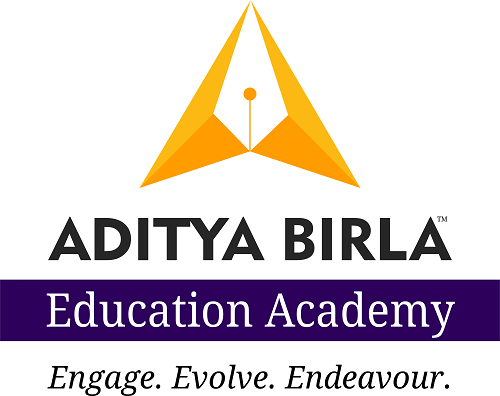As the title says – we need to decipher two terms, to begin with – Deeper learning and Digital Age while the term Digital age seems to be clearly understood, it is important to understand the term Digital age in the context of Deep Learning. As things are available at a click of a button and we are in the age of information overload, it is important to delve more into the ‘What’ and ‘ How’ and so also the ‘why’ of Deeper learning.
“Sometimes our understanding of deep learning isn’t all that deep,” says Maryellen Weimer, Ph.D., retired Professor Emeritus of Teaching and Learning at Penn State. “Typically, it’s defined by what it is not. It’s not memorising only to forget and it’s not reciting or regurgitating what really isn’t understood and can’t be applied.”
However, Aditya Birla Education Academy, one of the most successful teacher training academies in India , Always support Deep learning method for the best results.
So what can be Deeper Learning?
Deeper learning happens when students are engaged, think beyond what information is available at the surface level, and think critically. When deeper learning happens to students it’s an immersive experience and the student is able to transfer his /her learning beyond the realms of the textbook and the curriculum.
So, what does Deeper Learning Require?
Deeper learning requires a lot of planning and thought from the Academic team, teachers, and students. This approach moves away from the traditional textbook approach and needs to adapt to practices like
- project-based learning,
- assessments for learning,
- research beyond the internet,
- inquiry-based learning
Wherein students dig deeper into topics beyond digital platforms and books. In a country as rich as ours in History, culture, philosophy, and mythology there is so much for students to learn and connect with the past.
How does Deeper learning work?
Deeper learning can happen by researching –
Yes, this research can be setting questionnaires and interviews with Vedic scholars, grandparents, researchers, and scholars working in this field. Such practices help students frame the right kind of interview questions, improve communication skills, and thinking abilities. This also helps students take the onus of their own work and take initiative.
Another example from our own country in terms of Deeper learning beyond the digital age is to ‘Study the types of crops in our country’ basis on the soil types and the state of the farmers. Students can work at the experiential level asking students to work on farms, understand the type of soils, and grow the right kind of crops for the right kind of soil. The potential of collaboration is immense, critical thinking, and experiential learning involving the principles of Physics, Geography, Economics, and more.
Take the case of two schools – one in which teaching was predominantly done in smaller groups and working in small groups allowed everyone to participate and students who generally tend to shy away also participate in small-size learning and group discussions. While in another school peer learning was quite predominant – peer learning did not mean that the teacher stopped teaching which is the fear most parents or schools have. Peer learning is facilitated by the teacher, and students take the lead this way taking ownership of their own learning. Pedagogy and culture of learning dominated in both schools, underneath the learning systems in both the schools' technology laid a strong foundation for learning. Multimedia is the real hook in the digital age and makes students the co-creators of knowledge along with imbibing 21st-century skills like Collaboration, critical thinking, communication, and creativity.
What constitutes deeper learning in the class – the ‘How’.
Teachers need to equip students with cognitive, interpersonal, and intrapersonal. Cognitive refers to reasoning and problem-solving; intrapersonal refers to self-management, self-directedness, and conscientiousness; and interpersonal refers to expressing ideas and communicating and working with others.
Cognitively passive learning involves
I attended classes and school, took notes, and studied from the guidebook and the notes copied from my friend, I tried to recall how much I remembered when I shut my notes. I also highlighted the notes in different coloured ink
While cognitively active learning leads to deep learning - all about
I attended classes, created my own questions, tried to figure out the answer myself before looking up the answer, looked up the answer, and broke down the complex process step – step.
Deeper learning is more about long-term learning and not focussing on rote memorising and just for the sake of the examinations as our current system is focusing on. As a system, we also need to move away from the pen – paper examinations especially in the formative years to promote deeper learning.
Schools must take greater time to create curriculums that promote deeper learning which moves beyond the textbooks. A simple solution to this is to have a deeper commitment to deeper learning when things are available at a click of a button and we call internet surfing research.
Deep learning, the suspect of machine learning -
On the other hand, Deep learning is a subset of machine learning that involves training artificial neural networks with multiple layers to process and analyze large sets of complex data, such as images, videos, and audio. It has become a key technology in the digital age, empowering a wide range of applications including image and speech recognition, natural language processing, and autonomous systems.
With the increasing availability of large amounts of data and powerful computing resources, deep learning has the potential to revolutionise many industries and change the way we interact with technology.
As a subfield of machine learning,m Deep learning has already been used to achieve significant advancements in a wide range of applications, including computer vision, natural language processing, speech recognition, and game-playing.
Now Let’s see some longer-term goals with deep learning
The long-term goal of Deep learning includes -
- Improving the ability of machines to understand and generate human language, with the ultimate goal of creating conversational agents that can hold natural, human-like conversations.
- Developing more advanced and sophisticated deep learning models that can reason, plan, and make decisions, with the goal of creating autonomous systems that can perform complex tasks without human supervision.
- Developing deep learning models that can learn from a variety of data types, including unstructured data such as images and videos, with the goal of creating systems that can understand and interact with the real world in a more natural and intuitive way.
- Creating more robust and explainable deep learning models, with the goal of making them more trustworthy and understandable to humans.
- Developing deep learning models that can learn continuously, with the goal of creating systems that can improve their performance over time with minimal human intervention.
- Creating more energy-efficient deep learning models, which will enable them to be deployed in more settings and at a larger scale.
- Overall, deep learning has the potential to revolutionize the way we interact with technology and to change our understanding of what computers are capable of.
Now let’s find out the benefit of Deep learning in the digital age :
Increased accuracy:
Deep learning algorithms can achieve higher levels of accuracy than traditional machine learning techniques, making them ideal for tasks such as image recognition, natural language processing, and predictive analytics.
Automated feature extraction:
Deep learning models can automatically extract features from raw data, reducing the need for manual feature engineering.
Handling large and complex data:
Deep learning models can handle large and complex data sets, making them ideal for big data applications.
Handling unstructured data:
Deep learning models can handle unstructured data such as images, videos, and text, making them ideal for applications such as social media analysis and computer vision.
Improved decision-making:
Deep learning models can be used to improve decision-making in areas such as finance, healthcare, and marketing by providing accurate predictions and recommendations.
Personalization:
Deep learning models can be used to personalize content and services for users, such as in online advertising and e-commerce.
Automation:
Deep learning can automate tasks that were previously done by humans, such as image classification, speech recognition, and natural language processing.
Real-time processing:
Deep learning models can process data in real time, making them ideal for applications such as self-driving cars, surveillance systems, and real-time analytics.
Overall, deep learning has the potential to revolutionize the way we interact with technology and to change our understanding of what computers are capable of.






